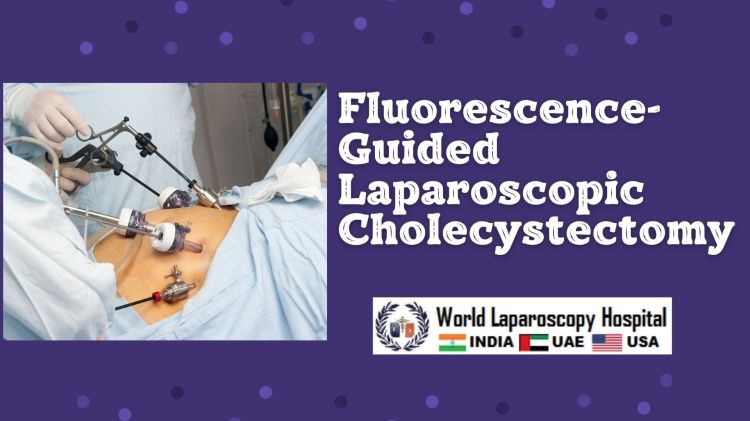Fluorescence-Guided Laparoscopic Cholecystectomy
Dr. Pradeep ChauhanMBBS; MS; DNB. M.MAS
I. Introduction
Fluorescence-guided surgery (FGS) is an innovative technique that utilizes near-infrared (NIR) fluorescence imaging to improve the visualization of anatomical structures during surgery. In laparoscopic cholecystectomy, FGS can enhance the identification of critical structures, such as the cystic duct, cystic artery, and common bile duct, thereby reducing the risk of iatrogenic injury and improving surgical outcomes. This essay will discuss the role of fluorescence-guided surgery in laparoscopic cholecystectomy.
II. Background and Rationale
A. Traditional laparoscopic cholecystectomy challenges
Limited visualization of biliary anatomy
Variability in cystic duct and artery anatomy
Risk of bile duct injury and other complications
B. Development of FGS in laparoscopic cholecystectomy
Introduction of indocyanine green (ICG) fluorescence imaging
Advancements in NIR imaging technology
Growing evidence supporting the benefits of FGS
III. Principles of Fluorescence-Guided Surgery
A. Indocyanine green (ICG) and NIR fluorescence
Characteristics and properties of ICG
Mechanism of fluorescence and NIR imaging
Safety profile and pharmacokinetics of ICG
B. Fluorescence imaging systems
Laparoscopic NIR fluorescence imaging systems
Integration with existing laparoscopic equipment
Technical considerations and optimization
IV. Technique of Fluorescence-Guided Laparoscopic Cholecystectomy
A. Preoperative preparation and patient selection
Indications and contraindications
ICG administration and timing
B. Intraoperative steps
Standard laparoscopic cholecystectomy technique
Activation of the fluorescence imaging system
Identification and dissection of fluorescently labeled structures
Confirmation of biliary anatomy and safe dissection
V. Clinical Outcomes and Benefits
A. Reduction in bile duct injuries
Improved visualization of biliary anatomy
Lower incidence of iatrogenic injuries
Enhanced surgeon confidence
B. Shorter operative time
Facilitation of challenging dissections
Reduction in conversion to open surgery
C. Improved identification of variant anatomy
Detection of aberrant bile ducts and arteries
Prevention of inadvertent injury to critical structures
VI. Limitations and Challenges of Fluorescence-Guided Surgery
A. Technical considerations
Signal interference from ambient light
Limited penetration depth of NIR fluorescence
B. False-positive and false-negative findings
Variability in ICG uptake and clearance
Influence of patient factors and clinical context
C. Learning curve and adoption barriers
Surgeon familiarity and experience with FGS
Cost and availability of fluorescence imaging systems
VII. Future Directions and Potential Applications
A. Enhanced imaging and visualization technologies
Improved NIR fluorescence imaging systems
Integration with other imaging modalities
B. Broader applications in hepatobiliary surgery
Identification of liver segments and tumor margins
Assessment of liver perfusion and function
C. Personalized medicine and targeted therapeutics
Development of targeted fluorescent probes
Intraoperative detection of molecular targets and biomarkers
VIII. Conclusion
Fluorescence-guided surgery has emerged as a valuable tool in laparoscopic cholecystectomy, offering improved visualization of biliary anatomy and a reduced risk of iatrogenic injury. The use of ICG and NIR fluorescence imaging enhances the identification of critical structures, facilitates dissection, and contributes to improved surgical outcomes. Despite
some limitations and challenges, the adoption of FGS in laparoscopic cholecystectomy has the potential to transform the surgical landscape and improve patient care.
As advancements in imaging technology continue to evolve, FGS may find broader applications in hepatobiliary surgery and personalized medicine. The integration of FGS with other imaging modalities, as well as the development of targeted fluorescent probes, could further enhance surgical precision and enable more tailored therapeutic interventions. In conclusion, fluorescence-guided surgery is poised to play an increasingly significant role in laparoscopic cholecystectomy and the broader field of minimally invasive surgery, ultimately leading to better patient outcomes and safer surgical practices.


